Tour
The first thing we noticed about the Pioneer SE-A1000s is their interesting band design. It has two parts: two hard plastic half-rings that suspend a soft cloth band. The cloth band is the part that actually touches your head, while the half-rings orbit around it. The cloth band runs along a ribbon, which is connected to a plastic holder.



The cups are large, textured, rounded black plastic. They connect to the band at silvery plastic spheres that allow the cups to tilt back and forth. The inside of the cups feature large, cloth-covered pads.
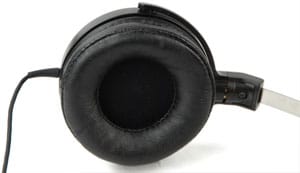
The padding is slightly triangular, with more padding toward the outside edge and less towards the inside.
The 6 meter-long cord is wrapped in a fiber weave. The cord ends in a plug whose cord guard is a metal spring. The plug itself is threaded, so it can be screwed into a port that's also threaded.
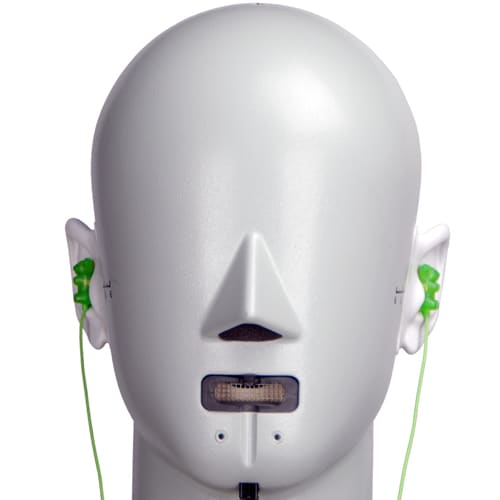
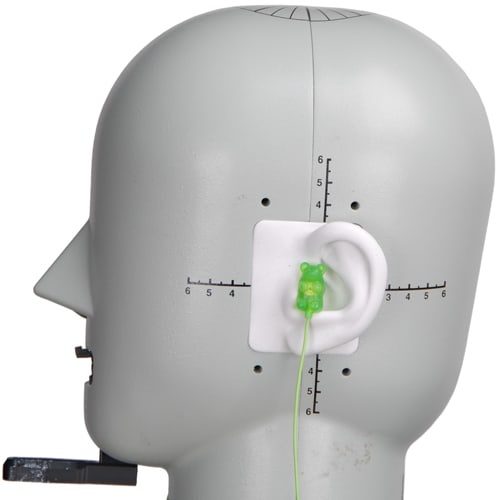
In the Box
{{section_header}}{{section.name}}{{/section_header}}
The contents of the box are limited to the headphones themselves, a soft pouch, and a 1/8-to-1/4-inch adapter.
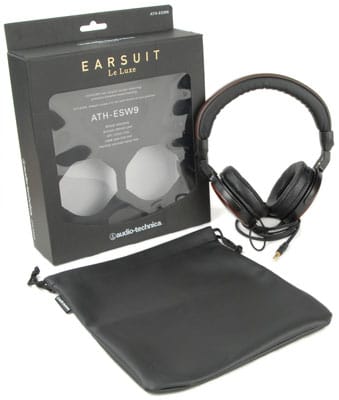
Durability
{{section_header}}{{section.name}}{{/section_header}}
In terms of durability, the Pioneer SE-A1000s seem to be pretty solid. Their cord has a woven body sock that should keep it very safe. The cord guards seem to be incredibly solid, and end in metal springs. The portion where the cord meets the ear cup is similarly protected.
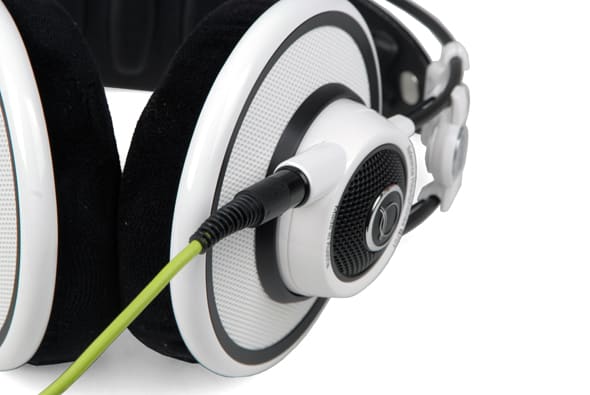
The ear cups connect to the band at a pivot point that allows them to tilt. This is a moving part, which could break down with time, but it seems fairly sturdy.
The band itself is comprised of two parts. The outer band is actually two thin plastic bands that arc well over your head. They can bend around quite a bit, and generally seem to be about as sturdy as a solid band, but capable of slightly more movement. The interior band is a ribbon covered in cloth. It seems robust enough.
The biggest weak point is the band, but its design allows it to bend quite a bit. We wouldn't worry too much about these things breaking.
Aesthetics
{{section_header}}{{section.name}}{{/section_header}}
Off the head, these headphones look pretty cool. They have an interesting, youthful - but not garish - aesthetic. On the head, however, it's hard to not look a bit foolish. The headphones are gigantic, and if you wore these out of your house you'd look like a lost DJ. If you plan on using these in your house, or you actually are a DJ and very proud of it, then the A1000s should be great for you.
Summary
{{section_header}}{{section.name}}{{/section_header}}
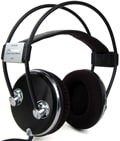
The Pioneer SE-A1000 headphones are on-ear headphones intended for use in a home theater setup. To help facilitate such an environment, the A1000s come with a very durable cord that's almost 20 feet in length (6 meters). The cord itself is wrapped in a fiber knit, which should protect it from getting stepped on, rolled over, or from other dangers that come from sprawling across a living room floor. Also, the A1000s come with a 1/4-inch plug, which should help them fit into higher-end setups.
Frequency Response
{{section_header}}{{section.name}}{{/section_header}}
As you can see in the graph to the right, both the left and right channels perform within the limits, for the most part. There seems to be a very small bass boost, as those frequencies are emphasized ever-so-slightly more than the middle tones. The curves are a bit sharp throughout, but until the first big spike in the high-end, these spikes only represent a handful of decibels -- nothing you'd notice. The bit spike in the high half of the graph is a bit more substantial, spanning about eight decibels, but it's still nothing that would ruin a listening experience. After the limits drop off, the graph gets a bit erratic and the decibel level assigned to those frequencies drops off considerably. This area to the right of the limits isn't the most accurate line, which is partially why our limits stop before the end of the graph. It is, however, valuable in that it depicts a general trend: high pitches tend to be underemphasized. Overall, however, these headphones do a great job.

Distortion
{{section_header}}{{section.name}}{{/section_header}}
The biggest problem we found with distortion was with some bass frequencies. The graph starts out at almost 2% (3% is a noticeable level), but once the distortion leveled off it stayed very minimal for the rest of the graph. Towards the high mid-range, the right channel peeked up slightly, but it wasn't much. Overall, these headphones performed well; it was just the poor bass response that really killed its score.
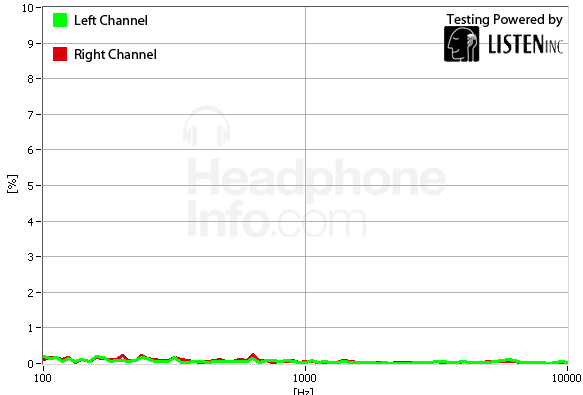
Tracking
{{section_header}}{{section.name}}{{/section_header}}
These headphones showcase fairly stable tracking for the low and middle frequencies, albeit a few decibels too loud in the left ear. Toward the higher end, the line gets a bit more erratic. The difference here isn't very dramatic, however; it might sound like a cymbal keeps moving two feet to the left every once in a while. Beyond the 10 kHz mark we don't score, but we leave it on the graph to show a general trend. In this case, the sound seems to jump very dramatically from left to right.
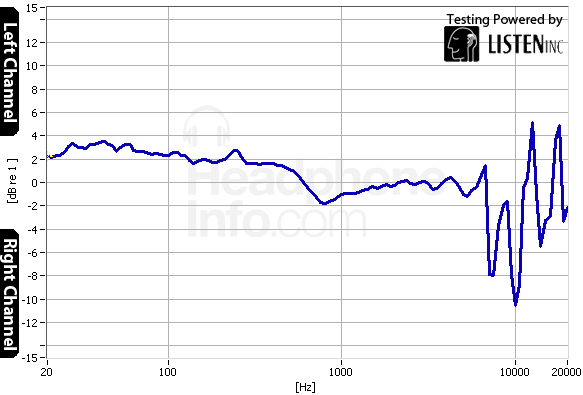
Maximum Usable Volume
{{section_header}}{{section.name}}{{/section_header}}
We were able to squeeze out about 110.39 dBSPL (sound presure level) from the Pioneer SE-A1000s before we reached that magic 3 percent distortion figure. This is about 10 decibels short of what we'd prefer to see, but then again, once you get above 120 dBSPL, you run the risk of damaging your hearing. The A1000s and their 110 dBSPL level should be fine for most users, or those who like their headphones to limit their risk of hearing loss.
Isolation
{{section_header}}{{section.name}}{{/section_header}}
These headphones aren't the best at blocking out external noise. We typically find low isolation scores in headphones with cloth-covered padding, because cloth doesn't form a good seal against skin. Poor seals allow more external sound to shimmy into your ear canal. As such, most low frequency sounds are getting through unhindered. The only sounds that these headphones block out are higher-end ones, and only about 18 decibels worth. These headphones should be great for allowing ambient sounds in, but not so good if you plan on walking down a busy street with your media player.

Leakage
{{section_header}}{{section.name}}{{/section_header}}
As we said in isolation, cloth padding does not make for a good seal with your head. As such, a great deal of your music is going to spill out and onto the world around you. If you were listening to music at a normal 78 dBSPL, someone next to you on the bus would probably be able to hear every note. If you like your music louder, then your sphere of annoyance will only grow.
These headphones actually manage to do worse than the open-backed headphones we've tested, like the Grado SR60 or Sennheiser HD 555. Considering these headphones do have a back to them, this score really points out just how bad the A1000s are at establishing a seal with your head. For the sake of other commuters, keep your A1000s at home.
Short-Term Use
{{section_header}}{{section.name}}{{/section_header}}
Comfort is, of course, a very subjective category. As a general rule, you should try on a pair of headphones before you buy them. This isn't always an option, unfortunately, which is why our reviews have a comfort section: to give you a basis for what you could reasonably expect from a pair of headphones. For this section, we wore the headphones for an hour.
After our hour with the A1000s, we really didn't have any complaints. The cloth-covered padding on the ear cups didn't feel scratchy, but that's mainly because the ear cups have a rather loose fit. We tend to prefer soft, synthetic leather coverings to cloth (both for comfort and for a cup-to-head seal). This loose fit, however, might annoy those looking to move their heads around while listening to music. Since these headphones are so big, they will slide over your head a bit if you start nodding at a moderately quick tempo. Overall, however, we think these headphones are fairly comfortable.
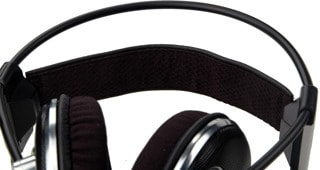
Extended Use
{{section_header}}{{section.name}}{{/section_header}}
Even after a six-hour listening session, we didn't have any complaints about the Pioneer SE-A1000s.
Cable Connectivity
{{section_header}}{{section.name}}{{/section_header}}
The cable on the A100s is long. It's an even 6 meters long, or a bit more than 19 feet, 8 inches for all you non-metric readers. In the home theater market, this length is absolutely ideal. Your amp could be just about anywhere in the room and you could hook into it without issue. Not only that, but the cord is so heavy duty that you really don't have to worry about it getting walked on.
The cord ends in a 3.5mm (1/8 inch) plug, which has threading on it in case you want to screw the headphones into a port. There's also a 1/4 inch adapter generously included.

These are the two cords that come in the box. It would've been nice to have a male-to-male connector to form one long cord, but alas, we do not live in such a world.
Customizability
{{section_header}}{{section.name}}{{/section_header}}
Other than the 1/8-to-1/4-inch adapter, which we already covered in the connectivity section, there isn't much you can do to customize these headphones. The cups do tilt at the band, and the soft interior band can extend quite a bit. Really, customizing how these headphones fit on your noodle is just about your only option.
Portability
{{section_header}}{{section.name}}{{/section_header}}
The Pioneer SE-A1000 headphones aren't the least portable headphones we've reviewed, but they're certainly annoying to lug around. First of all, they do come with a carrying case. It's felt, and looks like it should hold smooth stones, or several sets of Dungeons & Dragons dice. Regardless, this pouch doesn't really help you carry your headphones around.
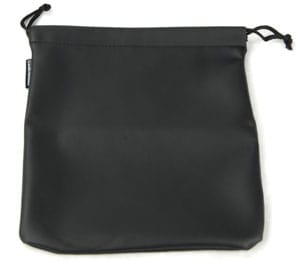
The pouch doesn't have any inner pockets or cord-managing features, so it's not particularly helpful.
The included velcro band is great for managing the cord, but it doesn't stop you from needing to cram about 16 feet of fairly thick cord.

The pouch doesn't have any inner pockets or cord-managing features, so it's not particularly helpful.
Of course, even if you deal with the cord, the headphones themselves are fairly big. They also tend to slide around our heads when we walk. These headphones are just slightly more portable than the Sennheiser HD 555s; if the A1000s didn't come with the cord wrap, the cord would be virtually unmanageable.
Maintenance
{{section_header}}{{section.name}}{{/section_header}}
Maintaining these headphones might be a bit hard, since they don't really disassemble well. The entire band, both hard parts and soft, and the cups seem far too hard to disassemble without breaking.
The cloth-covered padding does come off easily, revealing a piece of felt cloth glued to the inside of the cup. Should you decide to peel that back, you'll find a piece of foam glued beneath the cloth. Fortunately, the glue and sheets of soft material stop after their second iteration, giving you a peek at the sound element behind some plastic latticework. The result looks very messy, and we really wouldn't advise the reckless application of glue near the sound element, so we would advise the curious to leave the cloth and foam alone.
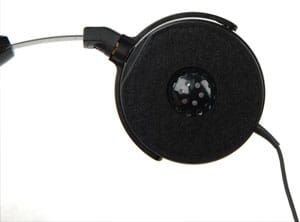
Once you take off the pad, there isn't much more you can do.

Once you take off the pad, there isn't much more you can do.

Once you take off the pad, there isn't much more you can do.
Other Features
{{section_header}}{{section.name}}{{/section_header}}
Battery
These headphones do not require a battery, which deserves some points.
Value
{{section_header}}{{section.name}}{{/section_header}}
The Pioneer SE-A1000 headphones aren't a bad deal for $200. They have fairly good audio quality, and are very comfortable. Their cost, however, is slightly steep for what you're getting, but we're assuming the extra money pays the 'interesting aesthetic' tax. We think the Sennheiser HD 555 headphones are a good comparison set for the A1000s. The HD 555s cost about $20 less, and offer better overall audio quality (with absurdly low distortion), though they seem a bit less durable and offer about 10 feet less in the cable department. Overall, we think the Sennheiser HD 555s offer a bit more bang for your buck in terms of actual headphone performance. Of course, although the A1000s offer a bit less for a bit more, they should still definitely be a consideration for anyone looking for some home theater cans.
Conclusion
{{section_header}}{{section.name}}{{/section_header}}
Overall, the Pioneer SE-A1000s are above average headphones. They offer good audio quality, great cable connectivity, and are the perfect kind of comfortable for movie marathons. Their only real places they lost points are in areas like portability, and they won't be the best at playing back distortion-free bass. Other than these minor qualms, we think the A1000s are a great choice at $200, as long as you're looking to use them in a home theater environment. If you want portability or noise cancellation, the A1000s shouldn't be on your list. While we would recommend checking out the A1000s, they aren't the best-performing or least-expensive set of headphones out there for home use. The Sennheiser HD 555s are a slightly better deal, but you'd have to sacrifice some of the A1000s quirky aesthetic appeal.
Meet the tester
Mark Brezinski works on the Home Team, reviewing refrigerators, minifridges, dishwashers, washing machines, dryers, air conditioners, air purifiers, and fans.
Checking our work.
Our team is here for one purpose: to help you buy the best stuff and love what you own. Our writers, editors, and lab technicians obsess over the products we cover to make sure you're confident and satisfied. Have a different opinion about something we recommend? Email us and we'll compare notes.
Shoot us an email
